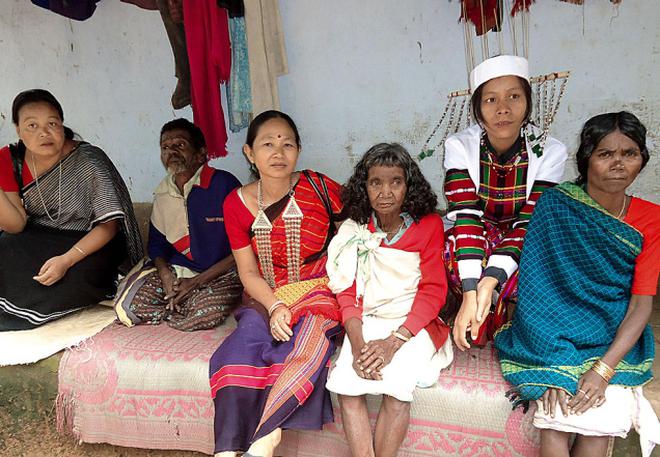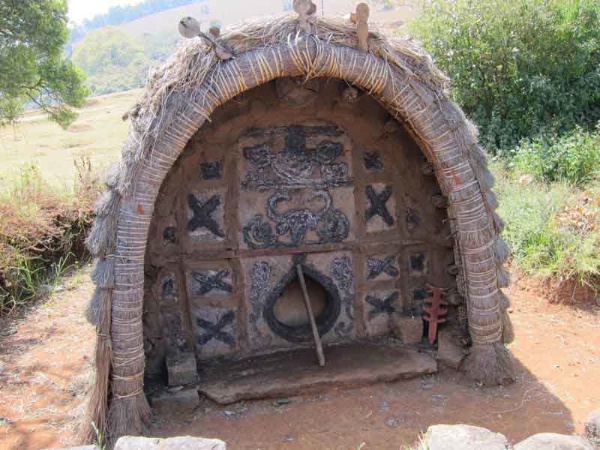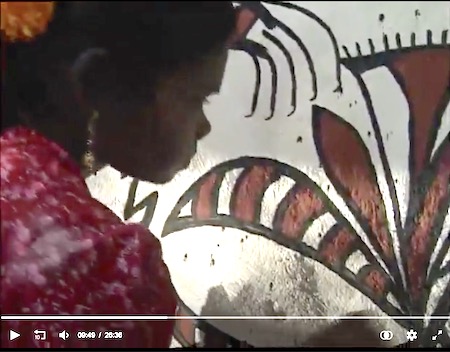
A group of tribals from Tripura have been on a visit to the Nilgiris. The tribals from various parts of India have been brought to the Nilgiris under a scheme sponsored by the Union Ministry of Tribal Affairs. The visit is aimed at bridging cultural differences among the tribals and promoting camaraderie among them. The group comprising 10 members from the Chakma, Riang, Lushai, Halam and Rupini tribal communities of Tripura have been studying the lifestyle of tribal groups of the Nilgiris like Todas in Tarnadumund and Paniyans and Mullukurumbars in Pandhalur taluk.
They also interacted with officials and voluntary agencies involved in tribal welfare-related activities.
Before concluding their visit on Wednesday, they are scheduled to exchange notes with a few other tribal groups like the Kotas.
Tribal Research Centre (TRC) Director C.R. Sathyanarayanan, who is coordinating the visit, told The Hindu that they would return with mixed feelings. Mr. Sathyanarayanan said the tribals were very impressed with the landscape of the Nilgiris, its verdancy and places where Toda munds (villages) were located. They were also happy to see that the Todas had balanced development with culture. However, the members, particularly two women Birota Chakma, a local body representative and Rammuan Tuii, a farmer, were upset over the living conditions in the settlements of Paniyans Bettukurumbas and Kaatunaikens [Kattunayakan] in Pandhalur.
They expressed their disappointment over the socio-economic backwardness of the communities, the condition of their houses and the appalling standard of hygiene and sanitation, Mr. Sathyanarayanan said.
While pointing out that the living conditions in tribal settlements in Tripura were far better and economically they were more than comfortable, they hoped something would be done to ensure equitable development of the tribal groups in the Nilgiris.
Source: “Tripura tribals better off than their Nilgiris bretheren” by D. Radhakrishnan, The Hindu, UDHAGAMANDALAM, 2 August 2011
Address : https://www.thehindu.com/todays-paper/tripura-tribals-better-off-than-their-nilgiris-bretheren/article2314983.ece
Date Visited: 14 July 2022
“Tribal communities are a standing example of how women play a major role in preservation of eco historic cultural heritage in India.” – Mari Marcel Thekaekara (writer and Co-Founder of ACCORD-Nilgiris) | Learn more >>
There are over 700 tribes (with overlapping communities in more than one State) which have been notified under Article 342 of the Constitution of India, spread over different States and Union Territories of the country. The largest number of main tribal communities (62) has been specified in relation to the State of Orissa. The Scheduled Tribes have been specified in relation to all the States and Union Territories except Haryana, Punjab, Chandigarh, Delhi, and Pondicherry.
Source: National Commission for Scheduled Tribes, Government of India (Ministry of Tribal Affairs)
URL: https://www.ncst.gov.in/content/frequently-asked-questions
Date visited: 14 September 2021
There has been some changes in the List of Scheduled Tribes in States/ UTs during the last decade.
Source: “Scheduled Tribes in India as revealed in Census 2011” by C. Chandramouli (Registrar General & Census Commissioner, India, Ministry of Home Affairs), 3 May 2013
Document: “23scheduledTribesIndiaRevealedInCensus2011EN20170503.pdf”
URL: https://ruralindiaonline.org/library/resource/scheduled-tribes-in-india-as-revealed-in-census-2011/
Date visited: 13 January 2022
Article 342 in the Constitution of India
- Provides for specification of tribes or tribal communities or parts of or groups within tribes or tribal communities which are deemed to be for the purposes of the Constitution the Scheduled Tribes in relation to that State or Union Territory.
- In pursuance of these provisions, the list of Scheduled Tribes are notified for each State or Union Territory and are valid only within the jurisdiction of that State or Union Territory and not outside.
- Scheduled Tribes are notified in 30 States/UTs
- Number of individual ethnic groups, etc. notified as Scheduled Tribes is 705
- There has been some changes in the List of Scheduled Tribes in States/ UTs during the last decade
Source: “Article 342 Constitution of India”
URL: https://www.indianconstitution.in/2016/07/article-342-constitution-of-india.html
Date visited: 13 January 2022
State/Union Territory-wise list: Scheduled Tribes in India >>
Tripura is the 2nd smallest state in terms of area, but the 2nd most populous state in the North Eastern Region. Although the state is small with a population of only over three million, the social composition of the population of Tripura is diverse. In particular, around one-third of the population comprises people belonging to the Scheduled Tribes.
According to final results of 2001 census, the state’s population stood at 31.99 lakh, with a density of 305 persons per sq. km. […]
There are 19 sub-tribes among the scheduled tribes in the state with their own distinctive cultures.
Population pattern and demography have always been sensitive issues in Tripura over the past century which saw an actual decline in indigenous tribal population in terms of percentage because of resettlement of non-tribals in the state, particularly in the aftermath of the partition of the country in 1947. […]
Evidently, the tribal people were reduced from over a half to barely more than a quarter of the state’s population in a century. […]
A feature of note is that around 97.4 per cent of the tribal population is rural. Human development among tribal people is thus very closely tied to the evolution of the rural economy.
Source: Demographic Features – Tripura – States and Union Territories – Know India: National Portal of India
Address : http://www.knowindia.gov.in/knowindia/state_uts.php?id=88
Date Visited: Sat Jan 31 2015 12:00:58 GMT+0100 (CET)
[Bold typeface added above for emphasis]

Photo © Ludwig Pesch
Learn more about the Toda community, their cultural traditions and the Nilgiri Biosphere >>
Tips for using interactive maps
Toggle to normal view (from reader view) should the interactive map not be displayed by your tablet, smartphone or pc browser
For details and hyperlinks click on the rectangular button (left on the map’s header)
Scroll and click on one of the markers for information of special interest
Explore India’s tribal cultural heritage with the help of another interactive map >>
“The uniqueness of northeast states of India lies in their cultures” | Learn more >>
In Marginalised but not Defeated, Tarun Kanti Bose (a seasoned public interest journalist) “talks about the Khasis, Nagas, Karbis, Garos, Rabhas, Misings, Daflas, Bodos, Akas and others in the North-east. […] The mainstream development paradigm is being questioned and new rainbows of collective, community reassertions are happening across the tribal belt in India. More so, in most cases, led by brave, empowered and resilient women.” | Learn more: https://countercurrents.org/2023/05/book-review-marginalised-but-not-defeated >>
Up-to-date reports by Indian journalists and commentators
To search Indian periodicals, magazines, web portals and other sources safely, click here. To find an Indian PhD thesis on a particular tribal community, region and related issues, click here >>
Search tips
Combine the name of any particular state, language or region with that of any tribal (Adivasi) community.
Add keywords of special interest (music, poetry, dance just as health, sacred grove and biodiversity); learn about the rights of Scheduled Tribes such as the “Forest Rights Act” (FRA); and the United Nations “Declaration on the Rights of Indigenous Peoples”, “Universal Declaration of Human Rights”, “women’s rights”, or “children’s right to education”.
Ask a question that includes “tribal” or “Adivasi”, for instance: “Adivasi way of life better?” (or “tribal way of life worse?”)
Specify any particular issue or news item (biodiversity, bonded labour and human trafficking, climate change, ecology, economic development, ethnobotany, ethnomedicine, global warming, hunter-gatherers in a particular region or state, prevention of rural poverty, water access).
For official figures include “scheduled tribe ST” along with a union state or region: e.g. “Chhattisgarh ST community”, “Himalayan tribe”, “Scheduled tribe Tamil Nadu census”, “ST Kerala census”, “Particularly Vulnerable Tribal Group Jharkhand”, “PVTG Rajasthan”, “Adivasi ST Kerala”, “Adibasi ST West Bengal” etc.
In case the Google Custom Search window is not displayed here try the following: (1) toggle between “Reader” and regular viewing; (2) in your browser’s Security settings select “Enable JavaScript” | More tips >>
Note: hyperlinks and quotes are meant for fact-checking and information purposes only | Disclaimer >>

Watch all parts on Archive.org >>
Bihar | Jharkhand >>